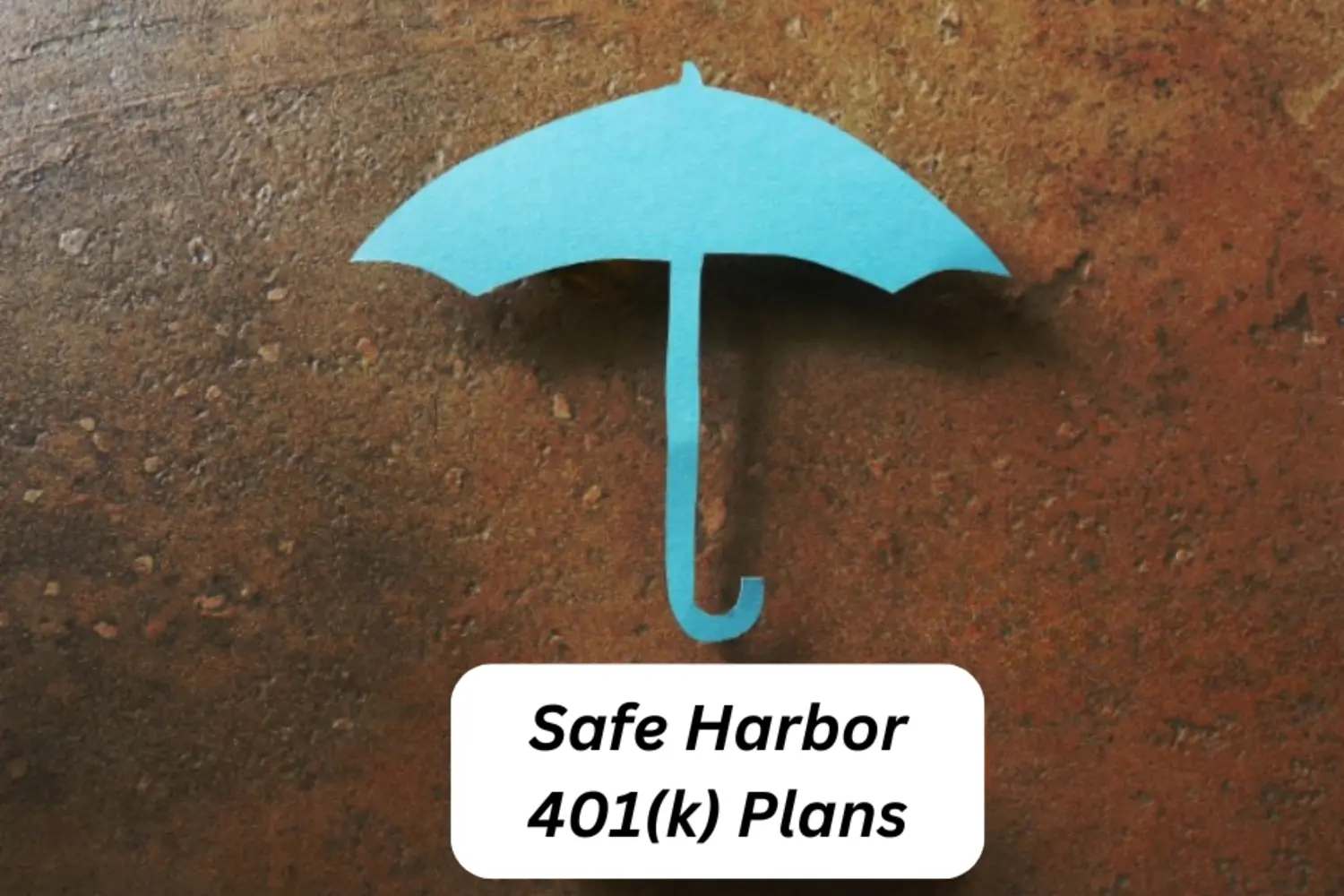Comprehensive Guide to Safe Harbor 401(k) Plans
Table of Contents
- What Are Safe Harbor 401(k) Plans?
- Benefits of Safe Harbor 401(k) Plans for Employers
- Key Features of a Safe Harbor 401(k) Plan
- How to Set Up a Safe Harbor 401(k) Plan
- Compliance Requirements and Deadlines
- Common Misconceptions About Safe Harbor 401(k) Plans
- How Safe Harbor Plans Benefit Employees
- Frequently Asked Questions (FAQs) About Safe Harbor 401(k) Plans
What Are Safe Harbor 401(k) Plans?
Safe Harbor 401(k) plans are employer-sponsored retirement savings plans designed to be robust and compliant with regulatory standards. Unlike standard 401(k) plans, these provide an automatic pass on the stringent annual nondiscrimination testing. This feature is particularly beneficial for owners and highly compensated employees who, due to stringent testing rules, might otherwise face restrictions on how much they can contribute to their plans. The Safe Harbor 401(k) structure is tailored to overcome these common roadblocks by making necessary employer contributions.
According to the IRS’s comprehensive guidelines on retirement plans, Safe Harbor 401(k) plans necessitate companies to contribute to employee savings, irrespective of employee contributions. By doing so, the plan achieves a balanced contribution rate, making it easier to maintain fairness and alignment across different income levels within the organization, thus fostering a more inclusive approach to retirement savings.
Benefits of Safe Harbor 401(k) Plans for Employers
Safe Harbor 401(k) plans offer many advantages to employers willing to commit to this forward-thinking retirement solution. By adhering to the mandatory contribution structure, organizations are exempted from complex nondiscrimination compliance tests, which can be time-consuming and costly. This simplifies the administrative processes and substantially reduces the risk of IRS penalties.
Besides compliance facilitation, employers investing in Safe Harbor plans often witness improved employee morale and participation rates. Providing employees with reliable retirement options can increase worker satisfaction and loyalty, resulting in increased productivity and lower turnover rates. This investment into employee futures resonates deeply, cultivating a culture of trust and appreciation.
Key Features of a Safe Harbor 401(k) Plan
Mandatory employer contributions are the defining characteristic of Safe Harbor 401(k) plans. Employers have two primary contribution options: matching and nonelective. Matching requires employers to match employees’ contributions to a specified percentage, encouraging active employee participation. On the other hand, the nonelective option involves a fixed contribution to all eligible employees’ accounts, regardless of their input, ensuring universal financial empowerment.
These plans also typically include immediate vesting of employer contributions, meaning that the contributions are wholly owned by the employees from the moment they are made. This feature generates goodwill and fosters a sense of financial security among employees, making these plans particularly attractive to new and existing staff eager to bolster their long-term financial outlook.
How to Set Up a Safe Harbor 401(k) Plan
Establishing a Safe Harbor 401(k) plan requires systematic planning and action. Initially, employers need to decide on the type of contributions that will most benefit the company and its employees. Tailoring the plan requires careful consideration to balance financial viability with attractive benefits.
Referencing the Department of Labor’s guidelines is critical to ensuring compliance and efficiency. Drafting plan documents, issuing notices, and setting up the necessary administrative measures should happen well before implementation deadlines—generally by October 1st for the upcoming plan year. For accuracy, consulting with retirement plan experts or legal advisors can help you tailor a plan that aligns with your company’s goals.
Compliance Requirements and Deadlines
Compliance with Safe Harbor 401(k) plans involves meeting specific annual requirements. Foremost among these is employers’ need to provide timely notices to their employees each plan year, detailing contribution structures and other relevant rights. This fosters transparency and informs employees about their options, reinforcing the mutual trust inherent in the plan.
Adhering to deadlines is paramount; failure to do so can lead to severe penalties or even the loss of the plan’s Safe Harbor status. To stay organized, employing a robust compliance management system or partnering with third-party administrators can streamline these processes, safeguarding the company’s and employees’ best interests.
Common Misconceptions About Safe Harbor 401(k) Plans
One of the most frequent misconceptions about Safe Harbor 401(k) plans is the perceived high cost. Although mandatory contributions involve financial commitment, they frequently result in tax advantages and boost workplace satisfaction, making these plans cost-effective in the long term. The value of potential tax credits and reduced compliance testing often justifies the initial expense, providing a competitive return on investment.
Another common myth is that these plans primarily favor employers. Safe Harbor 401(k) plans benefit employers and employees by fostering environments where both parties can naturally thrive without the cumbersome drawbacks of standard 401(k) plans. Understanding these elements for what they are dispels apprehensions and encourages broader participation.
How Safe Harbor Plans Benefit Employees
For employees, the immediate vesting of employer contributions in Safe Harbor plans serves as an enticing benefit, instantly increasing their net assets. This feature minimizes the waiting period inherent in traditional plans, bolstering employees’ confidence in their financial planning endeavors. These contributions form a secure and reliable savings foundation that employees can build upon for future prosperity.
Additionally, Safe Harbor plans provide structured channels for accumulating retirement savings, offering employees peace of mind. The predictability and security associated with employer-sponsored contributions are vital in sustaining an employee’s financial welfare, diminishing stress, and enhancing overall workplace satisfaction.
Frequently Asked Questions (FAQs) About Safe Harbor 401(k) Plans.
A common question is the comparative efficacy of Safe Harbor 401(k) plans versus traditional 401(k)s in optimizing personal savings. Generally, with guaranteed contributions from employers and reduced administrative burden, Safe Harbor plans can stabilize and often enhance retirement outcomes, reflecting positively on an employee’s financial health.
Another frequently asked question involves the perceived complexity of administering these plans. While the initial setup may seem demanding, the enduring simplicity in maintaining compliance and maximizing tax advantages often outweighs initial concerns. Organizations that take the time to implement Safe Harbor 401(k) plans find that the benefits far exceed any perceived administrative challenges.














Post Comment